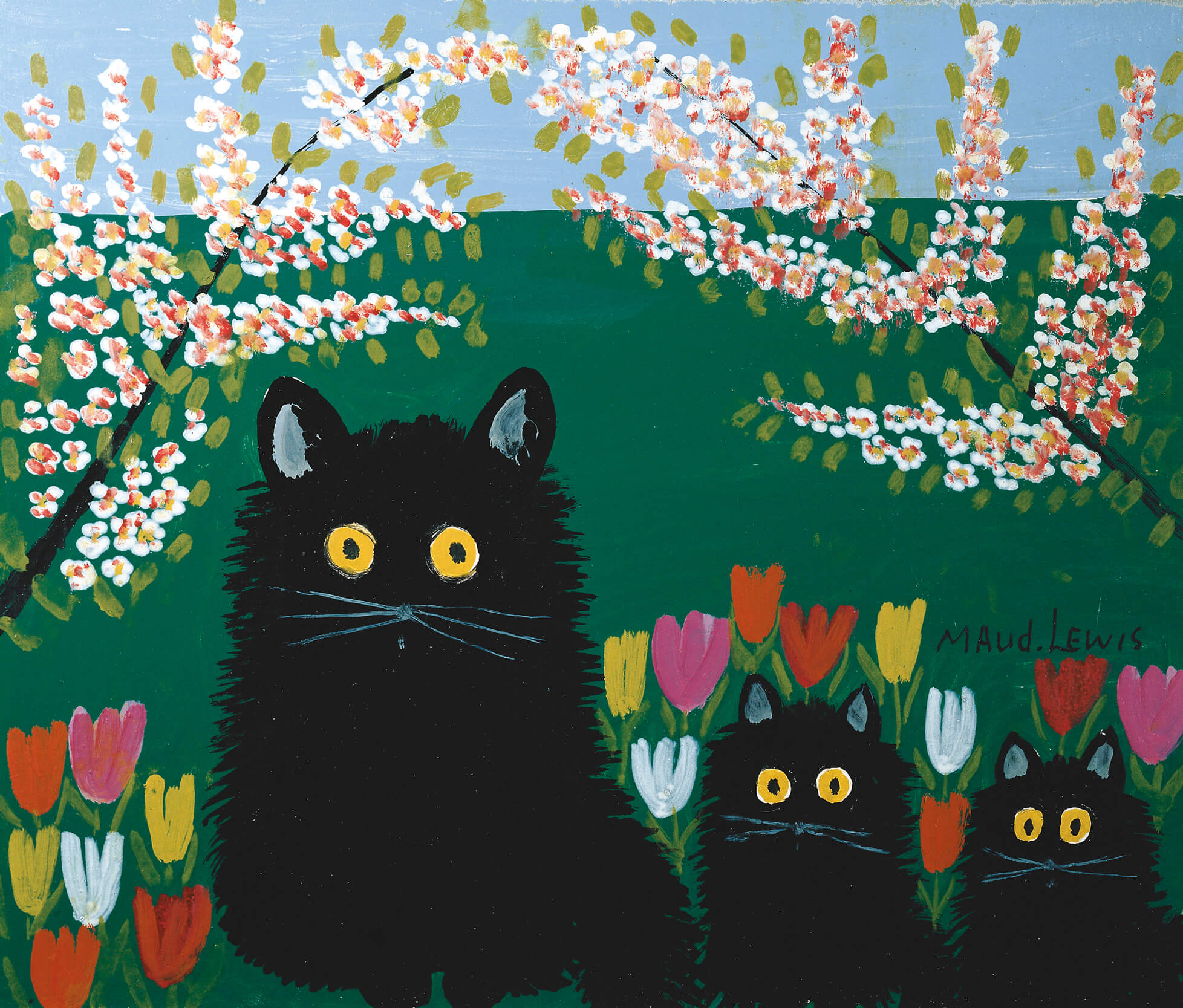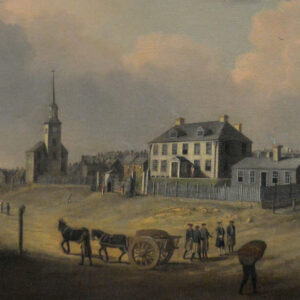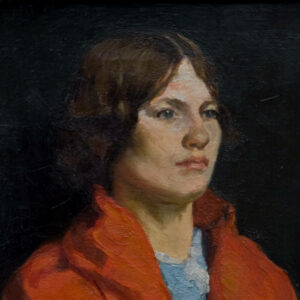Maud Lewis (1901–1970)

Maud Lewis, Three Black Cats, 1955
Oil on pulpboard, 30.5 x 30.7 cm
Private collection
Arguably the best-known artist from Nova Scotia today is Maud Lewis. Lewis’s rising fame continues to impact the city she only visited once in her lifetime: “Halifax, that’s the furthest I’ve been,” she told an interviewer in 1965. “And that’s a long time ago, before I got married.” She lived her whole life in the same corner of Nova Scotia, between the towns of Yarmouth and Digby. Her painted house, moved from its Marshalltown home and now permanently installed in the Art Gallery of Nova Scotia, attracts thousands of visitors to Halifax every year, and the legend that has grown since her death of cheerful perseverance through physical and economic hardship resonates with visitors from around the world.
-
Maud Lewis House, c.1920s
Mixed media, 4.1 x 4.1 x 3.8 m
Art Gallery of Nova Scotia, Halifax -
Maud Lewis, Deer in Winter, c.1950
Oil on pulpboard, 29.6 x 35.9 cm
Art Gallery of Nova Scotia, Halifax -
Maud Lewis, Oxen in Spring [Two Oxen with Yoke], c.1960s
Oil on pulpboard, 30.2 x 35.5 cm
Private collection, Nova Scotia
Preserving and displaying Maud Lewis’s iconic painted house was the impetus for the province seeking to establish a permanent home for the Art Gallery of Nova Scotia in the mid-1980s, fully eighty years after the Nova Scotia Museum of Fine Arts was founded with the aim of creating an art museum. The provincial and municipal governments, who since the nineteenth century had ignored the arguments of Forshaw Day (1831–1903), Anna Leonowens (1831–1915), Arthur Lismer (1885–1969), and numerous other Halifax artists and notable citizens about the importance of an art museum for the city, were finally swayed by the inspiring story of Maud Lewis. Ironically, the building eventually given for the art gallery was too small to accommodate the Maud Lewis House, and it was not until an expansion in 1998 that the house was finally on public view.
In her lifetime Lewis was lauded in the local and national press, but her reputation was, for the most part, spurred by people who visited the house in Marshalltown. She never had a museum exhibition in her lifetime, nor was her work collected by art galleries or museums while she was alive. Yet in visiting Halifax today, one cannot escape billboards and posters featuring her work, and her images are ubiquitous, found on T-shirts, mugs, tote bags, calendars, and other touristy paraphernalia carted home by visitors to the city. People travel to visit her house as if on pilgrimage, and the house and the display of paintings and objects in its gallery reinforce the romantic story of Maud Lewis, who has come to epitomize Nova Scotia folk art and who made an indelible mark on Halifax’s art history, albeit from her small house by the side of the road in Digby County.

 About the Author
About the Author
 More Online Art Books
More Online Art Books
 Acknowledgements
Acknowledgements